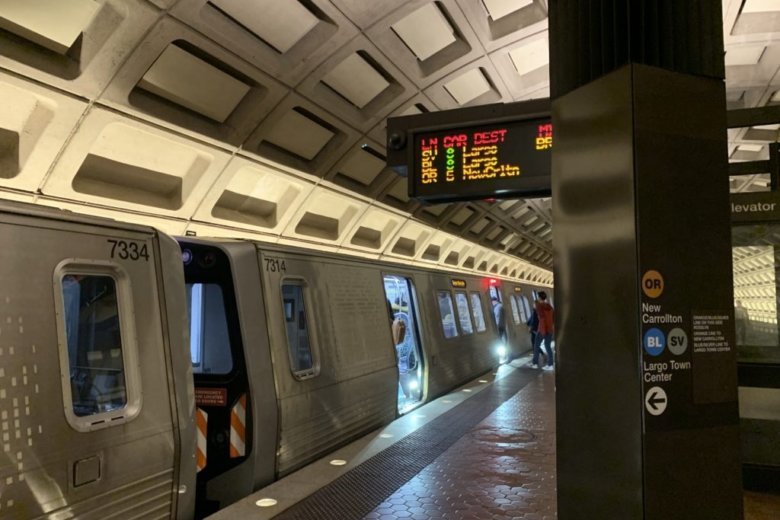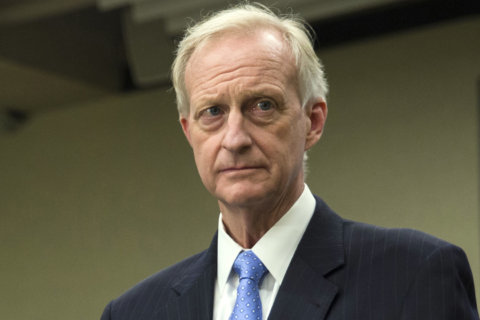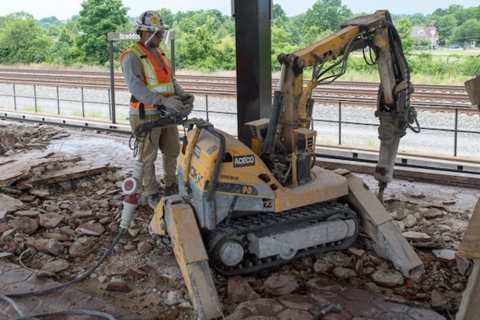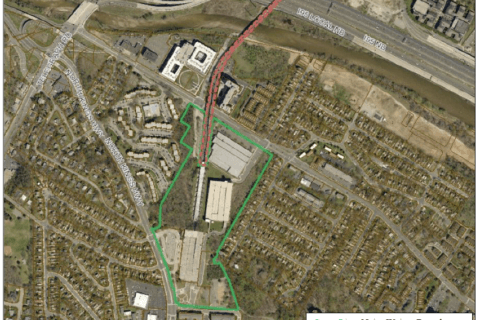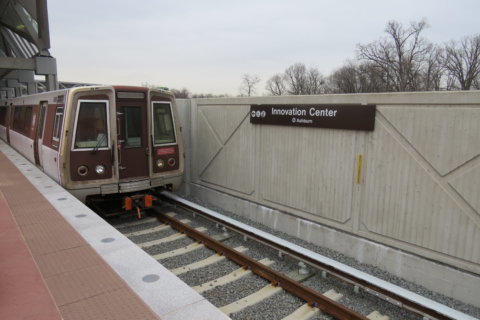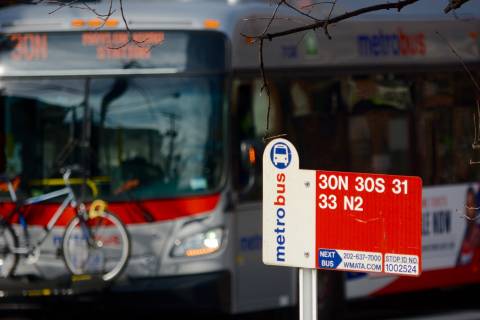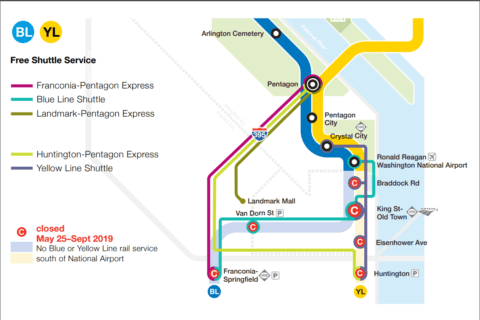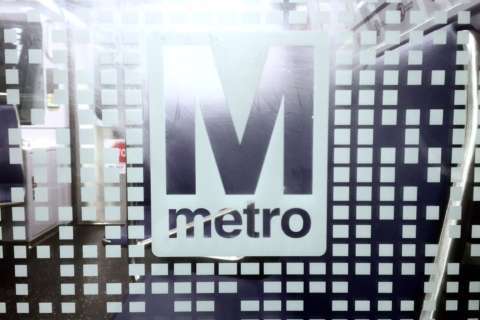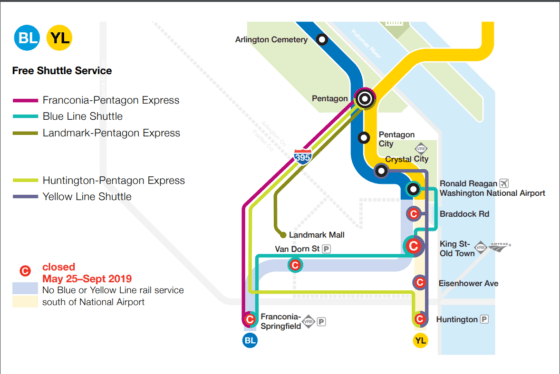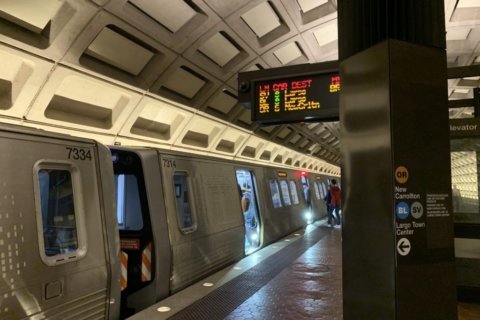
After decades of discussion, Metro kicked off a study this week of a new, second station at Rosslyn and other changes that could overhaul the way trains on the Blue, Orange and Silver lines run throughout the system. It could also prove to be the first major step toward the first new Metro tracks in the District since the Green Line was finished nearly 20 years ago.
The three lines meet at Rosslyn to enter D.C. from Virginia through a shared tunnel, and the lines share the same tracks until they reach Stadium-Armory. Metro struggles to handle the ripple effects of any problems on even one of the lines.
Metro reduced scheduled service on all lines across the system in 2017, in part to reflect actual service levels through places such as the Rosslyn Tunnel, but on-time performance is still far below Metro’s targets.
“In April 2019, Metro reached its target only 60% of mornings due to unanticipated delays and service disruptions, compared to April 2016, when Metro missed the target every morning,” study information said.
Six out of 10 trips across the Metro system that Metro provides refunds for through its Rush Hour Promise program for riders with registered SmarTrip cards are on the Blue, Orange or Silver lines.
A new station at Rosslyn, other connection between existing tracks, or new tracks or stations would also give Metro more ways to run trains and turn trains around during future round-the-clock shutdowns and other track work, the information said.
Metro also hopes to cut back service in some areas by turning trains around in the middle of the line on a more regular basis if trains are not crowded at certain stations. Those service cuts would save Metro money, the study documents said.
The Metro Board approved an application for additional funding to support the study at the end of 2017.
The alternatives analysis covers nearly the entire length of the Blue, Orange and Silver lines from New Carrollton and Largo Town Center in Maryland, through large parts of D.C. to Vienna, and the future Silver Line end past Dulles International Airport in Ashburn. The study also covers most of Arlington County, including south to the Pentagon station.
Over the next year or so, Metro hopes to identify the improvements that should move forward for final environmental reviews, designs and bids for local and federal funding.
Virginia has begun to consider ways to potentially contribute to the project.
“It’s time to start thinking about the Blue, Orange and Silver lines’ infrastructure constraints so that Metro is well positioned to serve future generations,” Metro General Manager Paul Wiedefeld said in a statement.
The relative speed is due to a series of past studies that have identified the issues and options. Still, getting funding and actually building any of these options could take 10 to 20 years or longer.
Metro is still looking at some of the simpler improvements at downtown stations recommended in 2002, and has not followed through on some other recommendations, such as the use of busy bus lines as priority transit corridors rather than simply routes meant to dump riders at rail stations.
Metro plans public meetings starting this fall.
Since one of the goals of the study is to increase Metro’s flexibility when there is scheduled track work or unexpected breakdowns, it increases the likelihood Metro will at least consider another set of tracks in or out of the District, or connecting lines in other ways, such as a way to skip parts of the tracks where lines overlap or add a third track.
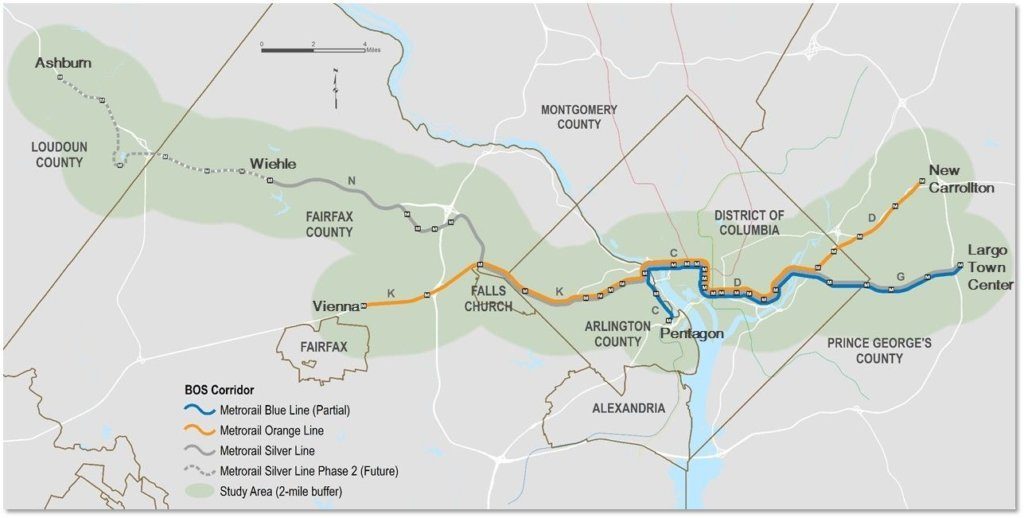
The most likely way to handle this in the near-term is adding more locations along current tracks where trains can switch from one track or line to another, but past studies have also suggested more significant work to build a separated Blue Line station at Rosslyn.
Though initially that would mean Blue Line riders in and out of the District would have to transfer at Rosslyn to or from trains on the Orange or Silver lines, the recommendation to build the separated station is based on the idea that the new separated Blue Line would then be extended through a new tunnel under the Potomac into new stations and tracks built in the District, including a Metro station in Georgetown.
Other goals of the current study include serving current and future ridership, improving on-time performance and meeting sustainability targets.
“Today, trains on the Blue, Orange, and Silver lines are already crowded during rush hours, when some Orange Line trains between Court House and Foggy Bottom are at maximum capacity. By 2040, both population and jobs along the three lines are forecast to grow by more than 20%, which will increase Metrorail ridership by 18%. The use of all eight-car trains alone is not enough to relieve the crowding and absorb future ridership growth,” study materials said.
Metro forecasts extremely crowded trains in 2040 between Foggy Bottom, Pentagon and Court House if it does not increase train service beyond the current schedule of every eight minutes during the morning rush.
Current regional assumptions based on December 2017 information for air quality plans are that Metro will revert to its “Rush Plus” service in 2027, which directed every other rush-hour train from Franconia-Springfield over the Yellow Line bridge to L’Enfant Plaza. Those assumptions are nonbinding.
Past Metro study recommendations
A 2002 study of the Blue and Orange line corridors recommended more pocket tracks along the lines, where trains can be more easily turned around.
A 2008 study called for tunnels allowing riders to walk between Farragut West and Farragut North and Gallery Place and Metro Center, as well as other improvements at stations downtown to handle crowding.
In 2013, a Metro plan recommended running all eight-car trains, implementing those downtown station improvements, boosting bus service, building a new Blue Line station at Rosslyn and building more of the pocket tracks where trains can be turned around.
The plan estimated the simplest work on the Blue, Orange and Silver line corridor would cost about $600 million in 2012 dollars and could be done by 2025 if work began around 2016. A new Blue Line station at Rosslyn was estimated to cost roughly $1 billion in 2012 dollars.
In 2014, a study following up on the 2013 plan looked at the possibility of connecting Orange or Silver line trains to Arlington Cemetery and Pentagon, with a new track between Courthouse and Rosslyn and Arlington Cemetery and Rosslyn, while also considering a second station at Rosslyn for the Blue Line only.
The 2014 study concluded a new track connection may not be doable and would not add enough capacity, and that the second Blue Line station was doable but would not significantly increase service. The study recommended the separated Blue Line station mined through the rock just to the side and about 55 feet below the current station only if Metro expects to build additional tracks beyond it in the future.
A separate 2014 study suggested that the additional tracks could run to a new Georgetown Metro stop before the Blue Line turned east along M Street to connect to Mount Vernon Square and Union Station.
A 2015 study found Metro had problems handling trains moving through locations where lines merge or split, getting trains turned around, and had problems when trains end up running very close together or have to stay at crowded platforms longer to let more riders on or off.
In 2016, Metro reviewed locations along the Blue, Orange and Silver lines, where the system could add crossover tracks or spots for trains to turn around in the middle of the line.
The study recommended potential service reductions by improving turnaround opportunities for the Blue Line near Stadium-Armory using either existing tracks, or a new Blue Line-only station at RFK Stadium, or for the Silver Line at East Falls Church or West Falls Church (under that plan, Silver Line trains would run only between Ashburn and Falls Church).

